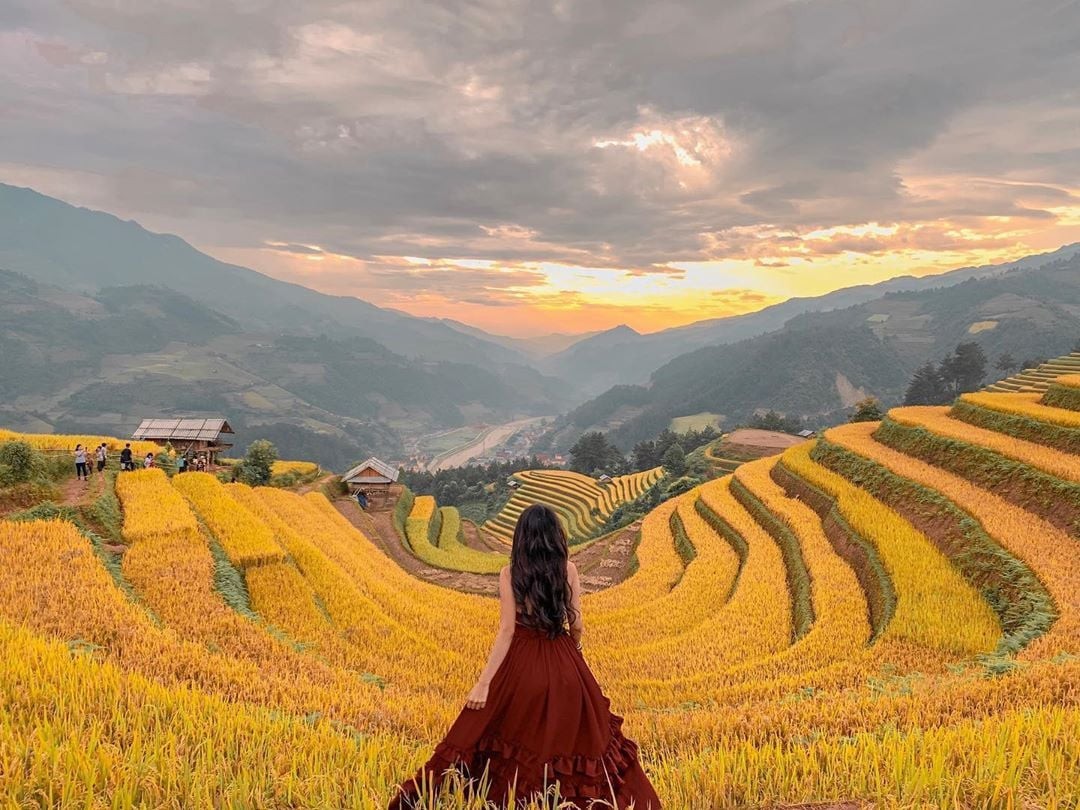Unusual And Amazing Experiences You Can Have in Colombia
Colombia, officially the Republic of Colombia, is a country in South America. It is bounded on the north by the Caribbean Sea, the northwest by Panama, the south by Ecuador and Peru, the east by Venezuela, the southeast by Brazil, and the west by the Pacific Ocean. Colombia is composed of 32 departments and the Capital District of Bogotá, the country's largest city. It covers an area of 1,141,748 square kilometres (440,831 sq mi), with a population of 50 million. Colombia's rich cultural heritage reflects influences by various Amerindian civilizations, European settlement, African slaves, and immigration from Europe and the Middle East. Spanish is the nation's official language, besides which over 70 languages are spoken.
Colombia is known as a ‘megadiverse’ country, home to an impressive variety of environments and ecosystems, including deserts, Caribbean coast, Pacific coast, Amazon rainforest, plains, the Andes mountain range and countryside landscapes. These unique environments provide many activities unique to Colombia. Here are ten of the best.
1. Swim in the River of Five Colours
 |
| Photo: amazing.zone |
Caño Cristales (English: Crystal Channel) is a Colombian river located in the Serrania de la Macarena province of Meta, and is a tributary of the Guayabero River. The river is commonly called the "River of Five Colors" or the "Liquid Rainbow," and is noted for its striking colors. The bed of the river from the end of July through November is variously colored yellow, green, blue, black, and especially red, the last caused by Macarenia clavigera plants (family Podostemaceae) on the riverbed.
Over the years some have said the river is one of the most beautiful on earth. National Geographic quotes that the river seems to have been from "The Garden of Eden".
The quartzite rocks of the Serrania de la Macarena tableland formed approximately 1.2 billion years ago. They are a western extension of the Guiana Shield of Venezuela.
Caño Cristales is a fast-flowing river with many rapids and waterfalls. Small circular pits known as giant's kettles can be found in many parts of the riverbed, which have been formed by pebbles or chunks of harder rocks. Once one of these harder rock fragments falls into one of the cavities, it is rotated by the water current and begins to carve at the cavity wall, increasing the dimensions of the pit.
2. Visit La Cueva del Esplendor (the Cave of Splendor)
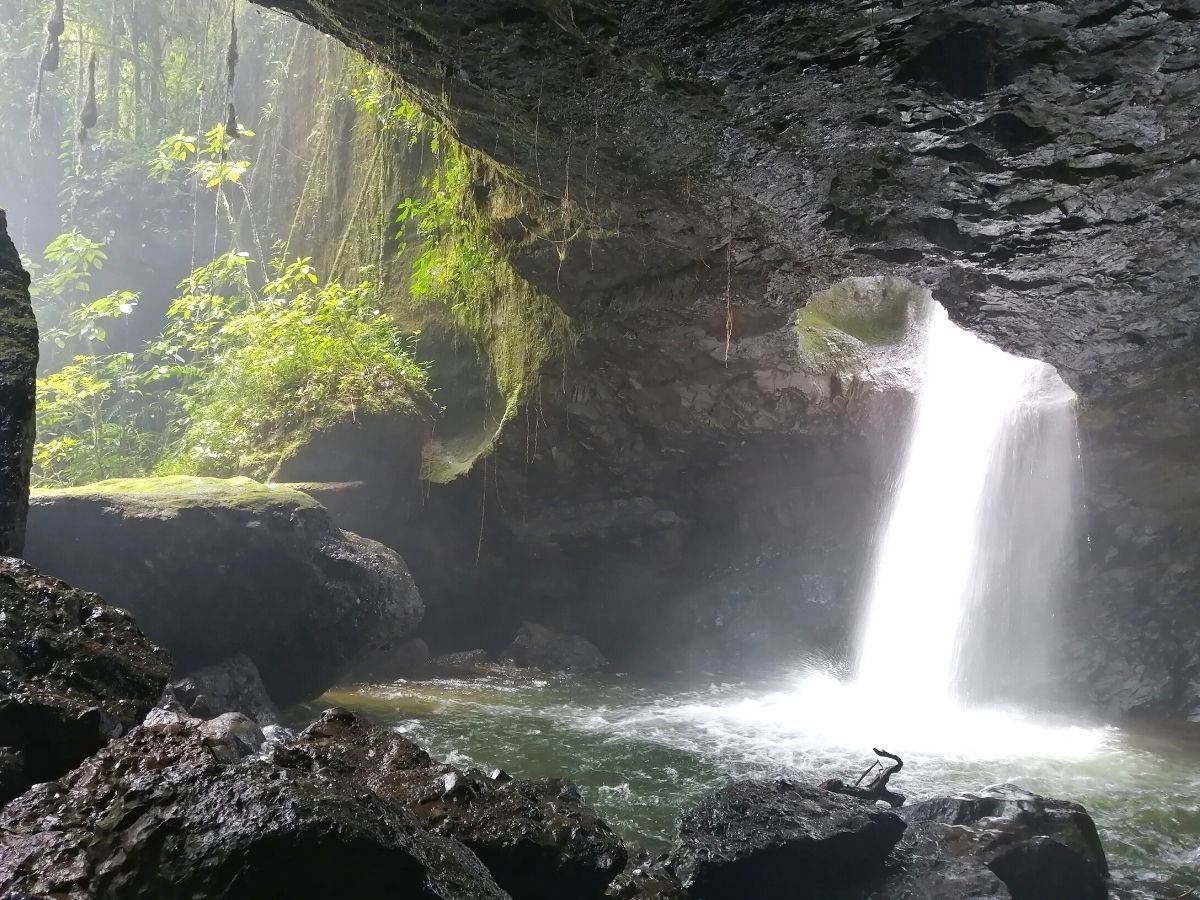 |
| Jardín de Aventura |
Located at 2200m amid beautiful landscapes, this spectacular cave has a 10m waterfall gushing through a large hole in the roof and is Jardín's most famous attraction. The cave is only accessible by foot along muddy, sometimes-narrow mountain paths. The entrance is around a three-hour hike from Jardín, and since 2017 there's been a daily limit of 40 visitors to prevent further damage to the cave. Only one operator is now allowed to lead hiking tours; book ahead.
The cascade begins about 70m above the entrance, falling in various stages before pouring into a small pool at the bottom of the cave, throwing up clouds of mist. It's possible to take a dip but the water is ice-cold. Note that from the access point it's a 20-minute walk down a steep path to the cave, so visitors need some dexterity.
Expect to pay around COP$70,000 per person for the guided trek, including a traditional lunch.
3. Trekking in the Cocora Valley
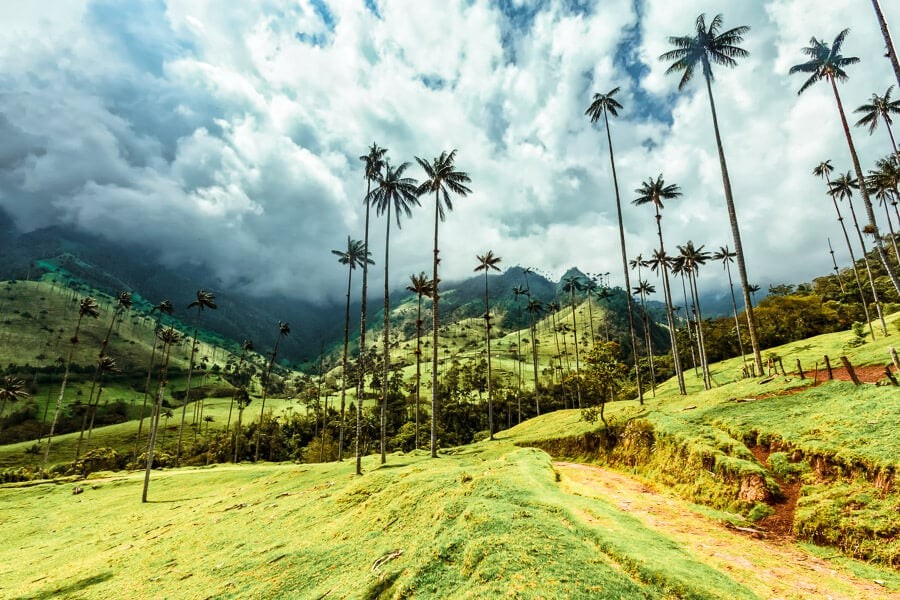 |
| Wander-Lush |
Getting to the trailhead to start the hike is easy, what with so many travelers in Salento wanting to visit Cocora. Simply head to the main square of Salento at one of the scheduled departure times (get an early one if you want to enjoy the entire hike). If you miss one of these jeeps, ask around and see if there are enough people wishing to make the 30-minute journey and you can usually then hire a jeep.
There are several different routes you can take when hiking the Cocora Valley. If you’re not particularly fit, or low on time, then take the road to the left at the start of the trailhead. This will lead you to the main valley full of the iconic Wax Palms – which can measure up to 60 m in height – in about half an hour.
However, assuming you’re reasonably fit and healthy and want to enjoy a real hike, then you’ll want to take the classic five-hour Cocora Valley route – you can do this either clockwise, or counterclockwise. The clockwise version is marginally easier, with fewer uphill sections, but you start off with the Wax Palm Valley. The counter-clockwise hike is certainly harder, but you get to enjoy the amazing sensation of finally arriving in the stunning and surreal valley at the end of your hike. For this reason, the counter-clockwise option is recommended.
You will then finally arrive at the valley of the Wax Palms, the main draw of any trip to Cocora. Spend some time wandering among these magical giants, before strolling back down the valley – you will arrive back at the trailhead after about half an hour, ready to take a jeep back to Salento for a well-deserved break.
When planning a hike in the Cocora Valley, make sure to pack smartly: bring good quality walking boots, a raincoat, various layers of clothing (the weather can change dramatically, as can the temperature) and plenty of water and snacks. It can be good to bring a packed lunch too, in order to maximise your time in the valley so you don’t have to rush back for lunch. Above all, just remember to enjoy it: hiking Cocora Valley is an essential part of any trip to Colombia!
4. Climb the Stairs of El Peñol
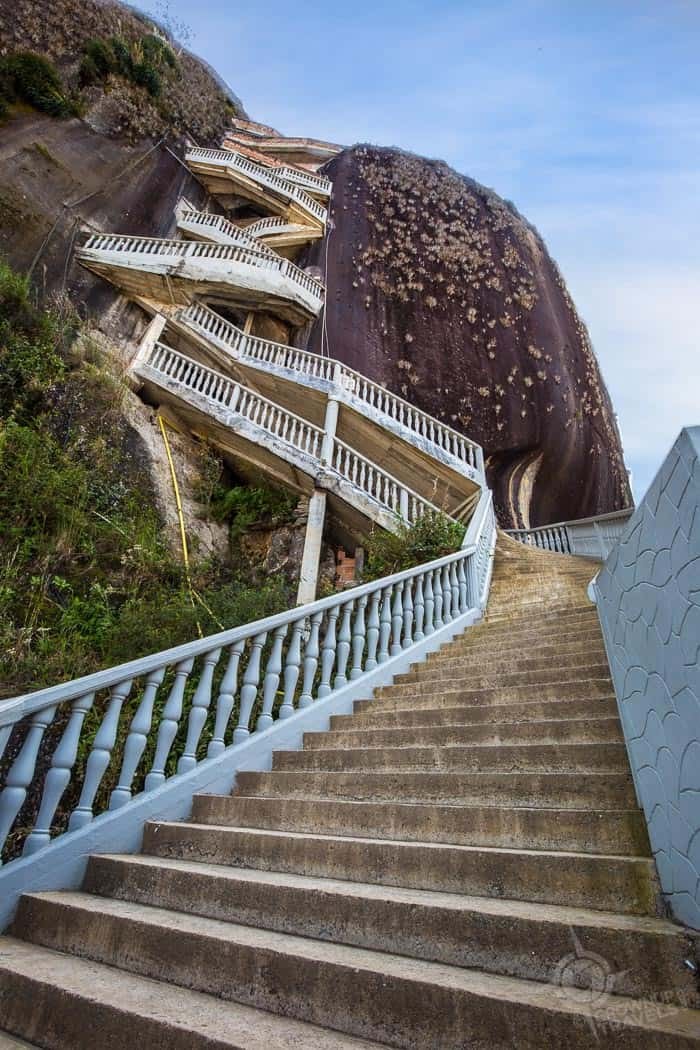 |
| Grownup Travels |
The Rock of Guatape (Spanish: El Peñón de Guatapé) is a landmark inselberg in Colombia. It is located in the town and municipality of Guatapé, Antioquia. It is also known as The Stone of El Peñol, or simply La Piedra or El Peñol (La Piedra del Peñol), as the town of El Peñol, which borders Guatapé, has also historically claimed the rock as their own and thus has led to different names for the site.
The landform is a granitic rock remnant that has resisted weathering and erosion, likely as result of being less fractured than the surrounding bedrock. Peñón de Guatapé is an outcrop of the Antioquia Batholith[3] and towers up to 200 meters (656 feet) above its base. Visitors can scale the rock via a staircase with 649 steps built into one side.
Near the base of the Rock, there are food and market stalls for shopping. About halfway up the stairs, there is a shrine to the Virgin Mary. The summit contains a three-story viewpoint tower, a convenience store, and a seating area.
According to geologists, the rock is approximately 65 million years old. The indigenous Tahamí, former inhabitants of this region, worshiped the rock and called it in their language mojarrá or mujará (meaning 'rock' or 'stone').
The rock was first officially climbed in July 16, 1954, when Luis Eduardo Villegas López, Pedro Nel Ramirez, and Ramón Díaz climbed the rock in a five-day endeavor, using sticks that were fixed against the rock's wall.
A new species of plant, named Pitcairnia heterophylla by a German scientist, was found on the top of the rock.
A viewing spot was built on top of the rock, where it is possible to acquire handicrafts, postcards, and other local goods. It is possible to see the 500 km shore-perimeter dam. There are 649 steps to the uppermost step atop the building at the summit, a fact reinforced by yellow numbers also seen in the climb up the stairs.
In the 1940s, the Colombian government declared it a National Monument.
5. Hiking and swimming at Tayrona National Park
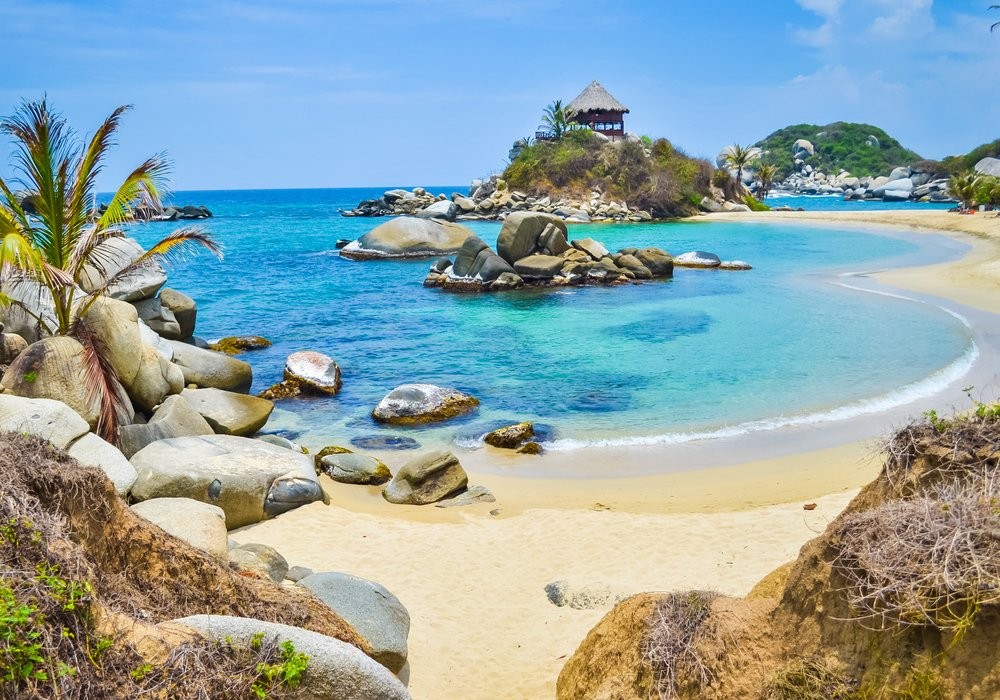 |
| The Global Alliance of National Parks |
The Tayrona Park is the place for watching and resting. This beautiful natural paradise offers amazing beaches of crystal waters: Chengue, Gayraca, Cinto, Neguanje, Concha, Guachaquita, between others. You can aslo enjoy another activities as long walkings, diving and the archeologic from the antique city of Tayrona Inhabitants.
The Tayrona park is ideal for nature lovers that wants to discover uniques landscapes, have a relaxing time, observing sunrise and sunsets and taking pictures.
The best is that you have the option to stay inside the park in different and spectacular hotels, ecological cabins of all kind and budgets. In Cañaveral sector there are 14 ecohabs, with similar architecture of the antique indigenous town of Tayrona.
There are too another spaces as campings area, perfectly equipped to live an unforgetable experience. The Tayrona Park is one of the jewel of Colombian nature that you can’t miss, it is one of the touristic site of Santa Marta, ecotourism of the highest level where to enjoy not only the manglars beaches but lagoons or coral reefs.
The park counts with marvelous accommodations as the Ecohabs that are comfortable cabins with a design inspired in the nature and the landscape of the park. It also has a camping area in Arrecifes sector, signed paths, parking area, restaurants and an audience with a capacity of 120 persons.
6. Go Tubing in Palomino
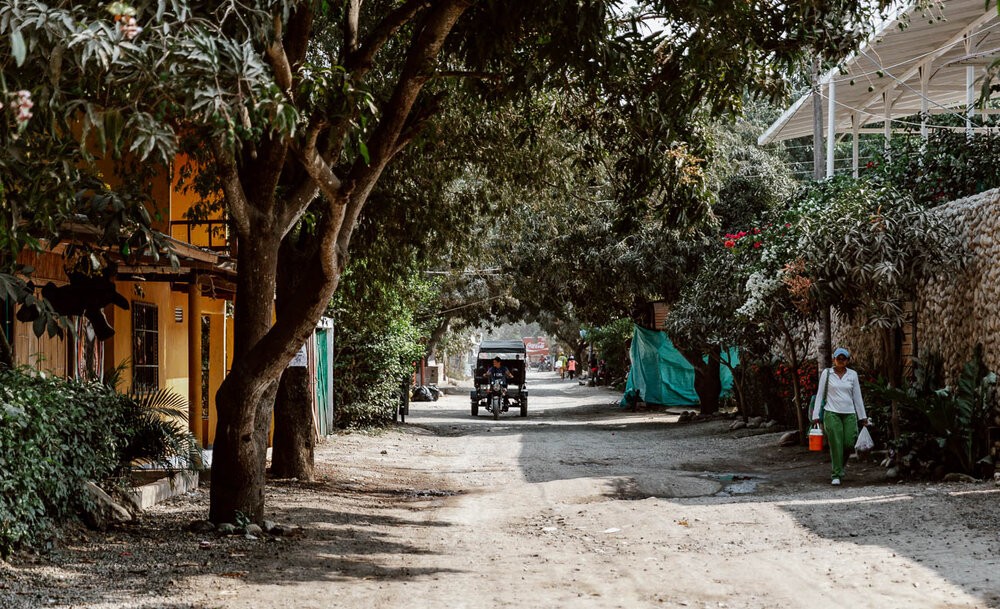 |
| ALONG DUSTY ROADS |
Palomino is the sort of place which changes your plans.
Its pace is slow, its air dry and salty. Its makeshift network of dusty streets, marked out by colourful handpainted signs for homes and hostels, lead through green fields, flowered verges, and open up to the wild sea. There are wooden shacks set up by locals to sell juices from fruit plucked from not too far away, open-sided bars and restaurants with tree trunk seats and tables where travellers shoot the breeze, and stalls laden with jewellery of copper, brass, and almost gold designed, chiselled, and hammered only that morning by the travelling artisan pop up on random corners.
On mainland Colombia, it's the closest place you'll find to the type of backpacker and hippy beach bum destination that is common place across south-east Asia. For some of you right now, that may be exactly what you're looking for; for others, that statement alone may be enough to put you off visiting.
From its rural and remote beginnings off the side of a highway, Palomino village has developed into somewhere where tourism is deciding the destiny and character of everything. There’s a new bamboo walled and palm-leaf roof hostel or restaurant seemingly under construction off every street, and in any space where the field doesn't have roughly written 'no se vende' sign. A bunch of Colombia small-group tours now include a stop here. Palomino stands perhaps as the insurgent popularity of northern Colombia as a destination in microcosm. The pace of change in this small section of one of the poorest departments of Colombia has been very quick, and speaking to locals and longer-term residents, mis-managed and uneven. This will likely only increase in the next few years as more of us choose to stop in Palomino before or after Tayrona, or on their way to an off-the-beaten-track adventure in La Guajira, and Colombia's popularity continues to grow each year.
7. Walk beside the world’s tallest palm trees
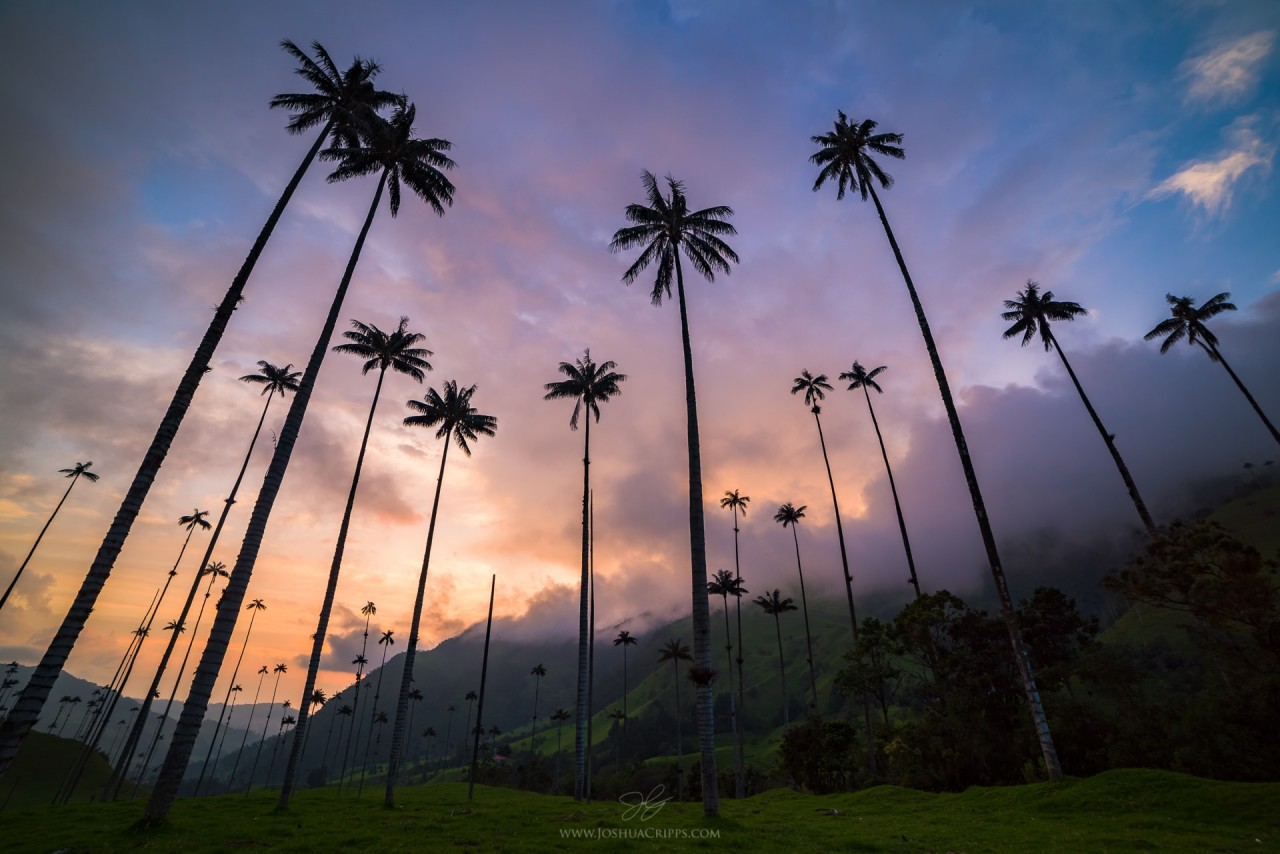 |
| Joshua Cripps |
The Palma de Cera (Wax Palm) with the scientific name of Ceroxylon Quindiuense is Colombia's national tree. This species of palm tree is found exclusively in the Colombian Andes, growing mainly in the Province of Quindío. The tree itself grows at altitudes of over about 3,200 feet (1000 meters).
This tree is the tallest palm in the world and are a prominent feature in the emblem of the National Parks.
In preparation for the Third South American Botanical Congress, held in Bogotá in 1949, a Preparatory Commission selected the Palma de Cera as Colombia's national tree.
In 1985, under Law # 61, it was officially adopted as a national symbol.
8. Wandering through the streets of Old Town Cartagena
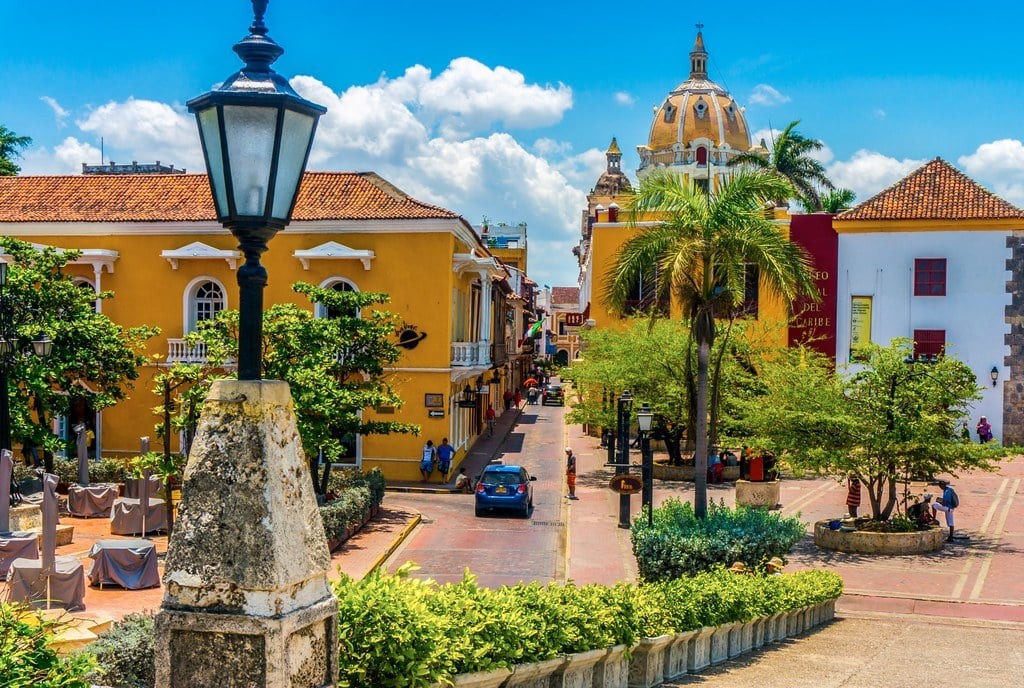 |
| Big 7 Travel |
Cartagena's old city is its principal attraction, particularly the inner walled town, consisting of the historical districts of El Centro and San Diego. It's one of finest examples of preserved colonial architecture in the Americas, packed with churches, monasteries, plazas, palaces and mansions with their famous overhanging balconies and shady patios.
The best way to experience the Old Town is to wander in leisurely fashion, savoring the architectural details, street life and local snacks along the way. Nighttime adds a whole different dimension.
Cartagena is one of those cities where it’s best to just put away the map for a few hours and allow yourself get lost. As it is a walled city, you can’t go too far… or get too lost.
 | Climb El Caminito del Rey – The World’s Scariest Hike Challenging The Bravest Hearts For people who are thrill seekers and love challenging themselves, this narrow, small walkway which was pinned along the steep walls of a narrow gorge ... |
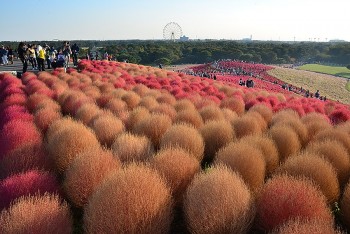 | Beauty of Japan: The Magical Kochia Hill Blooming in Hitachinaka Every year, tourists flood to Japan to witness the dreamy beauty of Kochiha Hill turning a bright and extraodrinary red colour, lending them the name ... |
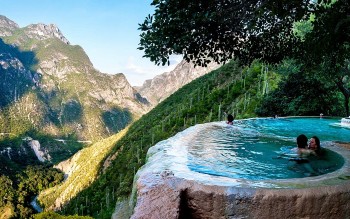 | Holiday Relaxation: Visit Las Grutas Tolantongo Mexico Hot Springs Grutas Tolantongo Hot Springs, located in the Mezquital Valley, State of Hidalgo in Mexico, is a beautiful and relaxing destination that attracts many tourists wanting ... |
Recommended
 Travel
Travel
Vietnam Through Australian Eyes: Land of Flavor, Warmth, and Timeless Charm
 Travel
Travel
Strategies for Sustainable Growth of Vietnam’s Tourism from International Markets
 Travel
Travel
Vietnam Strengthens Its Presence On The Global Tourism Map
 Multimedia
Multimedia
Phong Nha-Ke Bang National Park Named Top Adventure Travel Site
 Travel
Travel
Vietnam Welcomes Record-High Number of International Visitors
 Travel
Travel
Luxury Train From Hanoi To Hai Phong To Be Launched In May
 Travel
Travel
Phong Nha Named Top Budget-Friendly Travel Destination for Spring 2025: Agoda
 Travel
Travel


